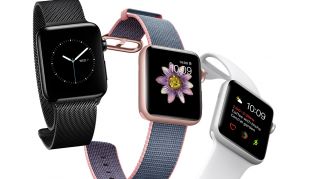
The Apple iPhone 7 may have been the star attraction at this year’s Apple Worldwide Developers Conference (WWDC), but the launch of the new second generation Apple Watch also made waves at the huge event.
Talk of waves is apt as the Apple Watch 2 is now waterproof, allowing protection up to 50m. The launch of the Watch 2 signals the first hardware update for the device since its 2015 launch, with the tech major listening to criticism and upping the processing power in one of the device’s most significant changes. The Watch 2 will now boast a dual-core processor, which the company claims is 50 times faster than its predecessor. The Watch also comes with improved battery life, as well as a GPS chip which dispenses the need for a synced iPhone to be in close range.
The Watch will come in two different sizes and start at £369. As with the original Watch, a range of colours and straps will escalate the price. The company has also paired with sports major Nike to offer a special edition of the Watch in a move which speaks to their change of marketing tack. They will be available from 9 September.
Significantly, the launch at WWDC pitched the Watch at a health and sport audience, moving away from the broader consumer pitch of the 2015 launch. Suggesting that Apple is targeting customers from competitors such as FitBit, Jeff Williams, Apple COO said:
“Apple Watch series 2 has been completely re-engineered. Apple Watch series 2 is swim proof, it’ll change how you use the watch.
“You can wear it whether you’re swimming, surfing or just doing the occasional cannon ball.”
This revamped marketing approach hopes to reverse the disappointing sales not only affecting Apple, but many wearable device makers. A recent Forrester Research found that people using wearbales had dropped from 21 percent in 2015 to 14 percent this year. Among young adults aged 28-36 – a huge demographic for Apple – the proportion of wearables users fell from 35 percent to 28 percent.
The drop in wearables has hit Apple, with the company seeing a (need proper percentage of Apple’s drop ion wearable device.
Despite wearable usage falling in the last year, Forrester predicts that the market segment will reach critical mass by 2021, with hopes that Apple may be the company to increase the sales of wearables.






